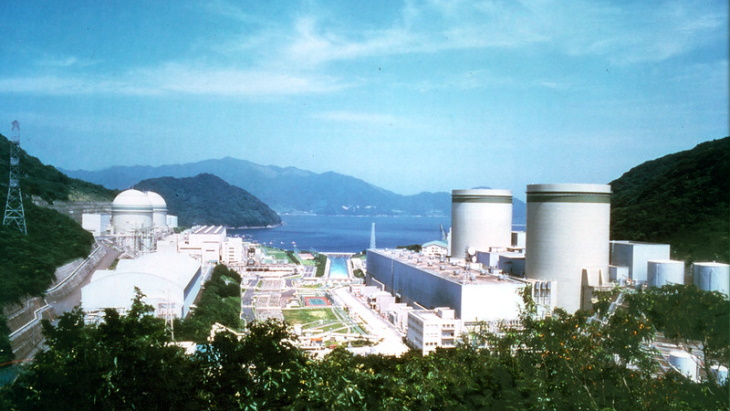Kansai Electric Power has announced it will apply for regulatory approval to extend the operating life of Takahama units 3 and 4 by a further 20 years. The company has also announced plans to replace the steam generators at the two pressurised water reactor units.

Takahama (Image: Kansai)
Kansai Electric Power has announced it will apply for regulatory approval to extend the operating life of Takahama units 3 and 4. The company has also announced plans to replace the steam generators at the two pressurised water reactor units.
Under regulations which came into force in July 2013, Japanese reactors have a nominal operating period of 40 years. One extension to this - limited to a maximum of 20 years - may be granted, requiring amongst other things a special inspection to verify the integrity of reactor pressure vessels and containment vessels after 35 years of operation.
The company said it has carried out the special inspections and evaluations of the two units, and has not found any issues likely to cause problems if the operating period is to be extended to 60 years. It has therefore decided to proceed with applying to the Nuclear Regulation Authority (NRA) for an extension.
In a separate announcement, Kansai said it plans to apply for approval from the Fukui prefecture and the town of Takahama to proceed with replacing the units' steam generators. It plans to carry out the work during scheduled outages, from June to October 2026 for unit 3 and October 2026 to February 2027 for unit 4.
Prior to the March 2011 accident at the Fukushima Daiichi plant, Japan's nuclear generating capacity had provided around 30% of the country's electricity. Today, the country has 33 nuclear power reactors classed as operable, but only 10 reactors have since received clearance from the NRA to restart since new regulatory requirements were introduced in 2013. Takahama 3 restarted commercial operation in 2016, and unit 4 in 2017. Another 17 reactors have applied to restart.
In 2021, nuclear energy provided just 7.2% of the country's electricity. Earlier this year, Prime Minister Fumio Kishida said Japan should work to restart its idled nuclear power reactors as well as considering extending their operating lives, and called for the maximum use of nuclear over the coming winter to counter possible electricity shortages.
The Takahama plant, in Fukui prefecture, is home to four reactors. Takahama 1 and 2 - both 780 MWe (net) pressurised water reactors - entered commercial operation in 1974 and 1975 respectively, while units 3 and 4 both began commercial operation in 1985. Takahama 1 and 2 became the first Japanese units to be granted a licence extension beyond 40 years under revised regulations, but are currently out of service pending the completion of a bunkered back-up control centre, as required by the regulator. Kansai has previously said it plans to restart units 1 and 2 in mid-2023.
Researched and written by World Nuclear News